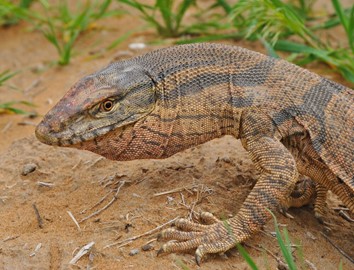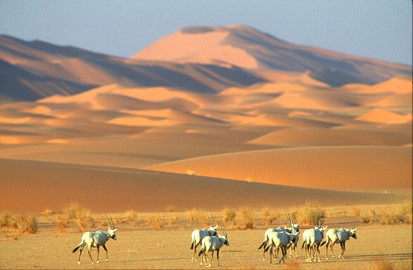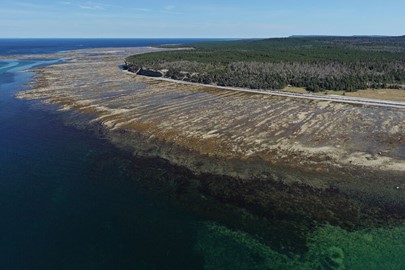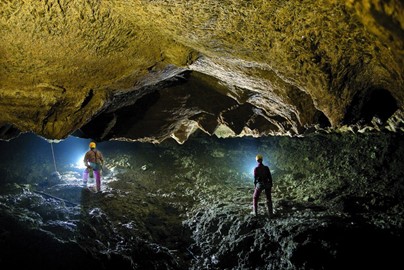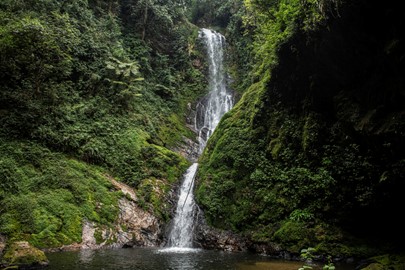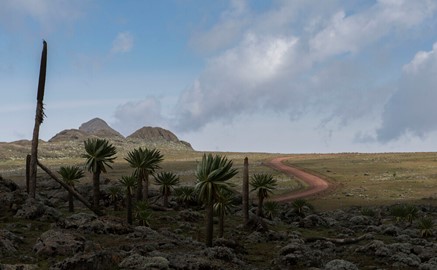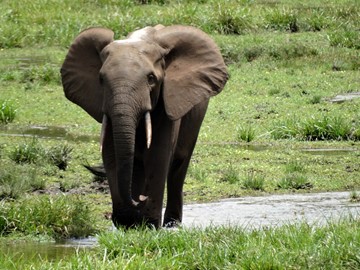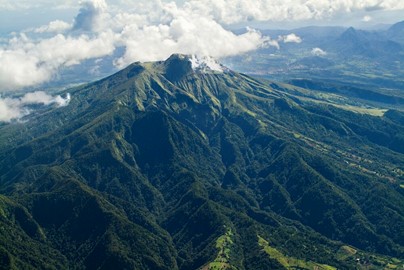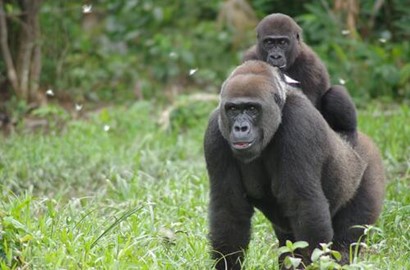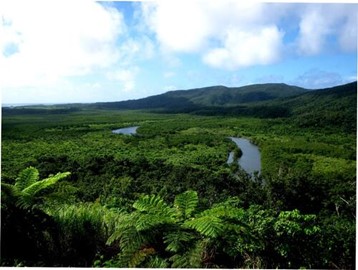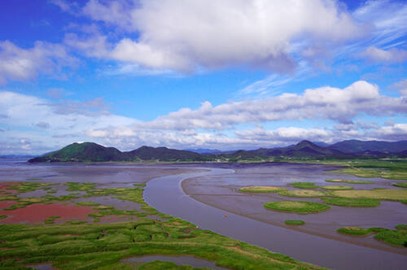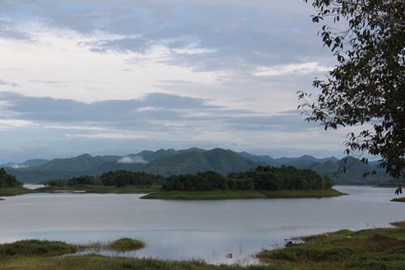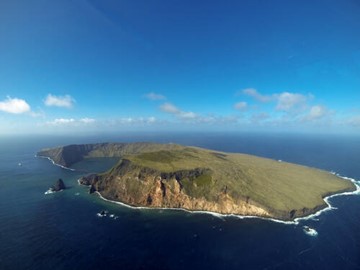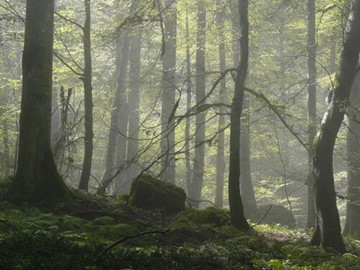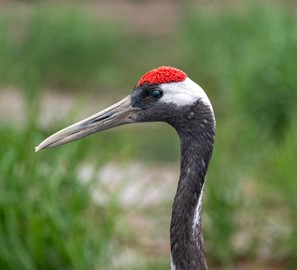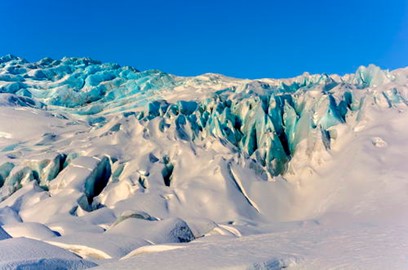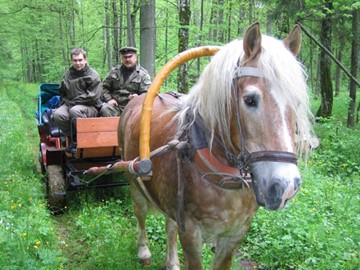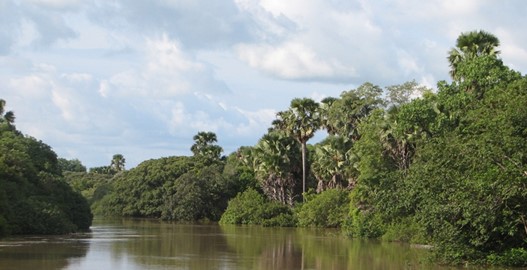category :: natural
Vjetrenica Cave, Ravno
Vjetrenica Cave, a UNESCO World Heritage site in Bosnia and Herzegovina, is renowned as the country's largest cave and a global biodiversity hotspot. Located in the Dinaric Alps, it features over 7 kilometers of passages adorned with stunning speleothems like stalactites and stalagmites, and hosts a remarkable array of subterranean species, including 37 endemic ones. Known for its strong, cool winds at the entrance and a constant 11°C temperature, this karstic wonder also preserves ancient cave drawings and... Read More
Lençóis Maranhenses National Park
Lençóis Maranhenses National Park, a UNESCO World Heritage site in Brazil, is a stunning natural wonder featuring vast, undulating sand dunes interspersed with crystal-clear freshwater lagoons that form during the rainy season. This unique coastal desert landscape, sculpted by wind and water, supports a surprising array of wildlife, including migratory birds and fish that thrive in the seasonal pools. Visitors can explore this breathtaking expanse through guided tours, marveling at the surreal beauty of whi... Read More
Badain Jaran Desert
The Badain Jaran Desert, a UNESCO World Heritage site in China, is renowned for its striking natural features, including some of the tallest stationary sand dunes on Earth and a high concentration of colorful inter-dunal lakes. This hyper-arid region showcases ongoing geological processes, with its 'singing sands' and wind-sculpted landforms adding to its unique allure. Recognized in 2024, it highlights China's ecological diversity and serves as a key area for studying desert evolution and biodiversity.
The Flow Country
The Flow Country, a UNESCO World Heritage site in Scotland’s Highlands, inscribed in July 2024, is the world’s first peatland to earn this status and the UK’s 35th listing. Covering 190,000 hectares of Caithness and Sutherland, this vast blanket bog, formed over 9,000 years, is the planet’s largest, storing immense carbon and supporting rare wildlife like red-throated divers and golden plovers. Recognized for its ecological significance, it joins iconic natural sites like the Great Barrier Reef, highlightin... Read More
Cold Winter Deserts of Turan
The Cold Winter Deserts of Turan, a UNESCO World Heritage site inscribed in September 2023, span Kazakhstan, Turkmenistan, and Uzbekistan, covering 14 protected areas across Central Asia’s temperate zone. Recognized as the world’s first listed cold winter desert, this transnational site stretches over 1,500 km, showcasing extreme climates with frigid winters and scorching summers, alongside diverse desert ecosystems. Home to unique flora like saxaul forests and endangered fauna such as the goitered gazelle ... Read More
Uruq Bani Ma’arid
Uruq Bani Ma’arid, a UNESCO World Heritage site in Saudi Arabia inscribed in September 2023, is a vast nature reserve in the western Empty Quarter, spanning over 12,700 square kilometers of dunes, plateaus, and gravel plains. As Saudi Arabia’s first natural UNESCO site and seventh overall, it protects a pristine desert ecosystem with reintroduced species like the Arabian oryx and critically endangered fauna such as the sand cat. Located along an ancient incense trade route, it blends ecological significance... Read More
Tugay forests
The Tugay Forests of the Tigrovaya Balka Nature Reserve, a UNESCO World Heritage site in Tajikistan inscribed in September 2023, span 50,000 hectares near the Afghan border along the Vakhsh River. As Tajikistan’s fourth UNESCO listing and first natural site, these rare floodplain ecosystems feature Asia’s largest tugay forests—riverine woodlands of poplar, tamarisk, and oleaster—supporting endangered species like the Bukhara deer and goitered gazelle. Protected since 1938, this biodiversity hotspot preserve... Read More
Anticosti
Anticosti, a UNESCO World Heritage site in Quebec, Canada, inscribed in September 2023, is a remote island in the Gulf of St. Lawrence renowned for its exceptional fossil record. Spanning over 9,200 square kilometers, it preserves the world’s most complete evidence of marine life from 447 to 437 million years ago, documenting Earth’s first mass extinction. Protected within a national park, biodiversity reserve, and ecological reserves, its untouched cliffs, rivers, and 1,440+ fossil species make it a global... Read More
Evaporitic Karst and Caves
The Evaporitic Karst and Caves of Northern Apennines, a UNESCO World Heritage site in Italy inscribed in September 2023, span Emilia-Romagna’s gypsum landscapes, hosting over 900 caves formed by evaporite dissolution over 250 million years. Recognized as Italy’s 59th UNESCO site and its first geological listing, this 100-km network includes the world’s most extensive and colorful evaporitic karst, with rare minerals, deep shafts, and underground rivers shaped by Triassic and Messinian salinity crises. Prote... Read More
Nyungwe National Park
Nyungwe National Park, a UNESCO World Heritage site in Rwanda inscribed in September 2023, spans 1,019 square kilometers of montane rainforest in the Albertine Rift, recognized as Rwanda’s fourth UNESCO listing. One of Africa’s oldest and most biodiverse forests, it harbors over 1,068 plant species, 13 primate species—including 500 chimpanzees—and rare birds like the great blue turaco, thriving at elevations up to 2,950 meters. Protected since 1933 and elevated to national park status in 2005, its pristine ... Read More
Bale Mountains National Park
Bale Mountains National Park, a UNESCO World Heritage site in Ethiopia inscribed in September 2023, spans 215,000 hectares in the southeastern highlands, 400 km from Addis Ababa. Renowned for its dramatic landscapes—volcanic peaks, Afro-alpine plateaus, and the vast Harenna Forest—it harbors exceptional biodiversity, including the endangered Ethiopian wolf, mountain nyala, and Bale monkey, alongside 1,660 plant species, 177 endemic to Ethiopia. As a vital water source for millions across East Africa, this p... Read More
Odzala Kokoua
Odzala-Kokoua, a UNESCO World Heritage site in the Republic of Congo, is a vast 13,546-square-kilometer national park in the Congo Basin, recognized in 2023 for its exceptional biodiversity and ecological significance. Established in 1935, it encompasses pristine rainforests, savannas, and saline clearings, hosting over 7,600 western lowland gorillas, 7,300 forest elephants, and Central Africa’s richest primate diversity. Managed by African Parks since 2010, this site, part of the world’s second-largest rai... Read More
Volcanoes and Forests of Northern Martinique
The Volcanoes and Forests of Northern Martinique, a UNESCO World Heritage site in the French overseas region of Martinique, spans 13,974 hectares of rugged volcanic landscapes, recognized in 2023 for its exceptional biodiversity and geological significance. Encompassing Mount Pelée, an active stratovolcano, and the Pitons du Carbet, it features lush rainforests, rare endemic species like the Martinique oriole, and dramatic volcanic formations from eruptions dating back millennia. This pristine natural reser... Read More
Ivindo
Ivindo National Park, a UNESCO World Heritage site in Gabon, recognized in 2021, is a rainforest reserve in the country’s northeast, celebrated for its pristine biodiversity and dramatic landscapes. Home to rare species like forest elephants, western lowland gorillas, and the endangered slender-snouted crocodile, it features the stunning Kongou and Djidji waterfalls within the Ivindo River basin. This intact equatorial ecosystem, minimally impacted by human activity, showcases Gabon’s ecological richness an... Read More
Colchic Rainforests and Wetlands
The Colchic Rainforests and Wetlands, a UNESCO World Heritage site in Georgia, recognized in 2021, are ancient rainforests and peatlands along the eastern Black Sea coast, preserving ecosystems from the Tertiary period. This biodiversity hotspot hosts relict species like Colchic boxwood and sturgeon, thriving in temperate forests, limestone gorges, and coastal wetlands. Protected across four parks—Kintrishi, Mtirala, Kobuleti, and Kolkheti—it showcases Georgia’s unique ecological legacy, offering a rare win... Read More
Amami Oshima Island
Amami-Oshima Island, a UNESCO World Heritage site in Japan, recognized in 2021, is a subtropical island in the Ryukyu Archipelago renowned for its exceptional biodiversity and ancient ecosystems. Part of a four-island listing with Tokunoshima, Iriomote, and northern Okinawa, it hosts unique species like the Amami rabbit and Ryukyu long-tailed giant rat, thriving in dense laurel forests and mangroves. This pristine natural haven reflects millions of years of ecological isolation, offering a living testament ... Read More
Getbol, Korean Tidal Flats
Getbol, Korean Tidal Flats, a UNESCO World Heritage site in South Korea, recognized in 2021, are expansive coastal wetlands along the Yellow Sea, celebrated for their ecological richness and geological significance. Formed by tidal cycles, these mudflats in Seocheon, Gochang, Shinan, and Boseong host diverse species like migratory birds and rare benthic organisms, thriving in a dynamic intertidal zone. A vital stopover on the East Asian-Australasian Flyway, they highlight Korea’s natural heritage and the in... Read More
Kaeng Krachan Forest
Kaeng Krachan Forest, a UNESCO World Heritage site in Thailand, recognized in 2021, is a pristine tropical forest along the Tenasserim Range, celebrated for its rich biodiversity and rugged terrain. Home to rare species like the Siamese crocodile, clouded leopard, and over 400 bird species, it thrives in a moist evergreen ecosystem shaped by steep slopes and rivers. Bordering Myanmar, this ecological sanctuary reflects Thailand’s natural heritage, offering a vital refuge for wildlife and a testament to Sout... Read More
French Austral Lands and Seas
The French Austral Lands and Seas, a UNESCO World Heritage site in the Antarctic region, encompass a pristine wilderness of volcanic islands and surrounding waters, home to an extraordinary concentration of biodiversity. This remote territory, including the Crozet Archipelago, Kerguelen Islands, and Saint-Paul and Amsterdam Islands, supports the world’s largest populations of king penguins and yellow-nosed albatrosses, alongside significant numbers of southern elephant seals and Antarctic fur seals. Its iso... Read More
Hyrcanian Forests
The Hyrcanian Forests, a UNESCO World Heritage site in Iran, are ancient woodlands renowned for their rich biodiversity and unique ecosystem. Dating back millions of years, these lush, temperate forests host a variety of rare plant and animal species, some of which are endemic. The site's dramatic landscapes, with steep slopes and deep valleys, contribute to its ecological significance and natural beauty, making it a vital conservation area and a testament to Iran's natural heritage.
Migratory Bird Sanctuaries
The Migratory Bird Sanctuaries, a UNESCO World Heritage site in China, protect the world’s largest intertidal mudflat system, serving as a critical habitat for millions of migratory birds along the East Asian-Australasian Flyway. This vital ecosystem supports numerous endangered species, including the spoon-billed sandpiper and red-crowned crane, offering essential stopover points for resting and feeding during their long migrations. Recognized in two phases, with the first in 2019 and an extension in 2024,... Read More
Vatnajokull
Vatnajökull, a UNESCO World Heritage site in Iceland, is renowned for its vast ice cap, which dominates the landscape with its stunning glaciers, ice caves, and volcanic features. This natural wonder is home to a unique ecosystem, supporting rare flora and fauna adapted to its harsh conditions. It also plays a critical role in global climate studies due to its sensitivity to environmental changes. Visitors are drawn to its breathtaking scenery and opportunities for adventure, making it a jewel of Iceland’s ... Read More
Primeval Beech Forests
The Primeval Beech Forests, a UNESCO World Heritage site in Europe, recognized across multiple expansions since 2007 with additions in 2017 and 2021, span 18 countries, preserving ancient beech woodlands untouched since the last Ice Age. These dense, old-growth forests harbor rare wildlife like lynx and showcase the beech tree’s post-glacial spread across diverse terrains. This transnational network reflects Europe’s ecological heritage, offering a living testament to natural resilience and biodiversity in ... Read More
Bialowieza Forest
Bialowieza Forest, a UNESCO World Heritage site in Belarus and Poland, recognized in 1979 with expansions in 1992 and 2014, is one of Europe’s last primeval lowland forests, preserved for over 800 years. Home to the largest population of European bison and ancient oaks, its dense woodlands and wetlands showcase exceptional biodiversity and natural resilience. This cross-border site reflects a rare remnant of Europe’s wild past, blending ecological significance with centuries of human stewardship in a pristi... Read More
W Arly Pendjari
W-Arly-Pendjari, a UNESCO World Heritage site in Benin, Burkina Faso, and Niger, recognized in 1996 with expansions in 2017, is a vast savanna and forest complex across three countries, forming West Africa’s largest intact wilderness. Home to elephants, lions, and the last West African giraffes, its diverse ecosystems—woodlands, wetlands, and grasslands—reflect exceptional biodiversity amid a semi-arid region. This transnational site showcases the region’s natural heritage, preserved through cross-border co... Read More




